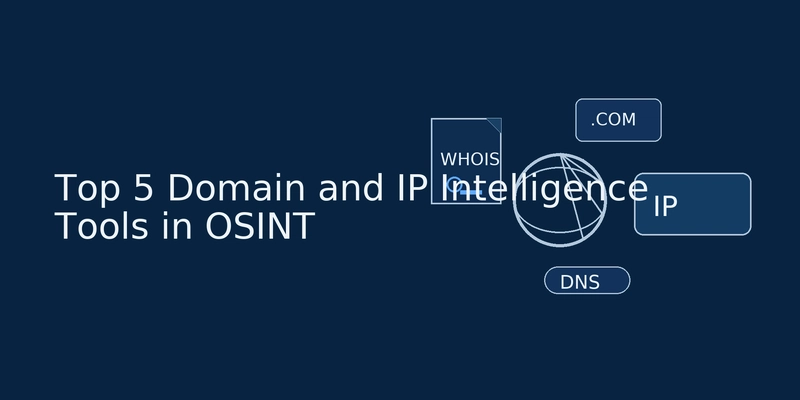Open Source Intelligence (OSINT) has become a cornerstone for cybersecurity professionals, researchers, and investigative journalists. By collecting and analyzing publicly available information, OSINT tools enable deeper insights into threats, infrastructure, and digital footprints.
Within the wide landscape of OSINT tools, one critical category is Domain and IP Intelligence. These tools specialize in gathering data about domains, IP addresses, SSL certificates, and related digital assets. They are essential for uncovering suspicious infrastructure, tracking malicious activities, and monitoring organizational exposure.
Below are the Top 5 Domain/IP Intelligence tools worth highlighting.
WhoisXML API
Website: https://whoisxmlapi.com
Description: WhoisXML API provides one of the largest databases for domain and IP WHOIS information, along with DNS and threat intelligence feeds. It helps trace domain ownership, monitor registration changes, and correlate IP infrastructure.
Best for: Investigating domain ownership and history.
Who is it for: Cybersecurity teams, threat hunters, fraud investigators, and brand protection specialists.
Top features:
- Comprehensive WHOIS and DNS data
- Historical WHOIS records
- Threat intelligence feeds with malicious domains/IPs
- API integrations for automation
DomainTools
Website: https://www.domaintools.com
Description: DomainTools is a widely recognized platform for domain and IP profiling, offering advanced pivoting capabilities to map connections across infrastructure. It is especially strong in attribution and tracking adversary infrastructure.
Best for: Infrastructure mapping and threat attribution.
Who is it for: Threat intelligence analysts, SOC teams, law enforcement.
Top features:
- Reverse WHOIS and IP lookups
- Domain history and registration tracking
- Risk scoring for domains
- Iris Investigate platform for pivot analysis
SecurityTrails
Website: https://securitytrails.com
Description: SecurityTrails focuses on domain and IP data enrichment, offering a detailed view of DNS records, subdomains, and historical infrastructure data. It provides both web-based access and robust APIs.
Best for: Asset discovery and external attack surface management.
Who is it for: Red teams, penetration testers, ASM providers, enterprise security teams.
Top features:
- Current and historical DNS records
- Subdomain enumeration
- Reverse IP and domain lookups
- API-friendly integrations for automation
ThreatMiner
Website: https://www.threatminer.org
Description: ThreatMiner is a free OSINT resource designed for security researchers. It aggregates threat-related intelligence around domains, IPs, hashes, and reports, linking them together for context.
Best for: Quick, free enrichment of suspicious indicators.
Who is it for: Security researchers, independent analysts, malware hunters.
Top features:
- Domain and IP reputation data
- Links between domains, IPs, and malware reports
- Searchable malware hashes and reports
- Simple interface with free access
CIRCL Passive DNS (Ail framework / Passive DNS project)
Website: https://www.circl.lu/services/passive-dns/
Description: CIRCL’s Passive DNS is a community-driven intelligence project that stores DNS query/response pairs observed from large networks. It enables researchers to see domain-IP relationships over time.
Best for: Identifying malicious infrastructure and mapping related domains.
Who is it for: Threat hunters, academic researchers, incident response teams.
Top features:
- Historical DNS resolutions
- Domain-to-IP and IP-to-domain mapping
- Community-driven, open-source ethos
- Supports automated querying through API
Conclusion
Domain and IP Intelligence is a critical pillar of OSINT. The five tools above — WhoisXML API, DomainTools, SecurityTrails, ThreatMiner, and CIRCL Passive DNS — cover the spectrum from commercial-grade enterprise platforms to open and community-driven resources. Depending on your needs, whether for professional threat intelligence or independent security research, these tools provide the visibility necessary to uncover hidden relationships, track malicious infrastructure, and strengthen your overall intelligence capabilities.




